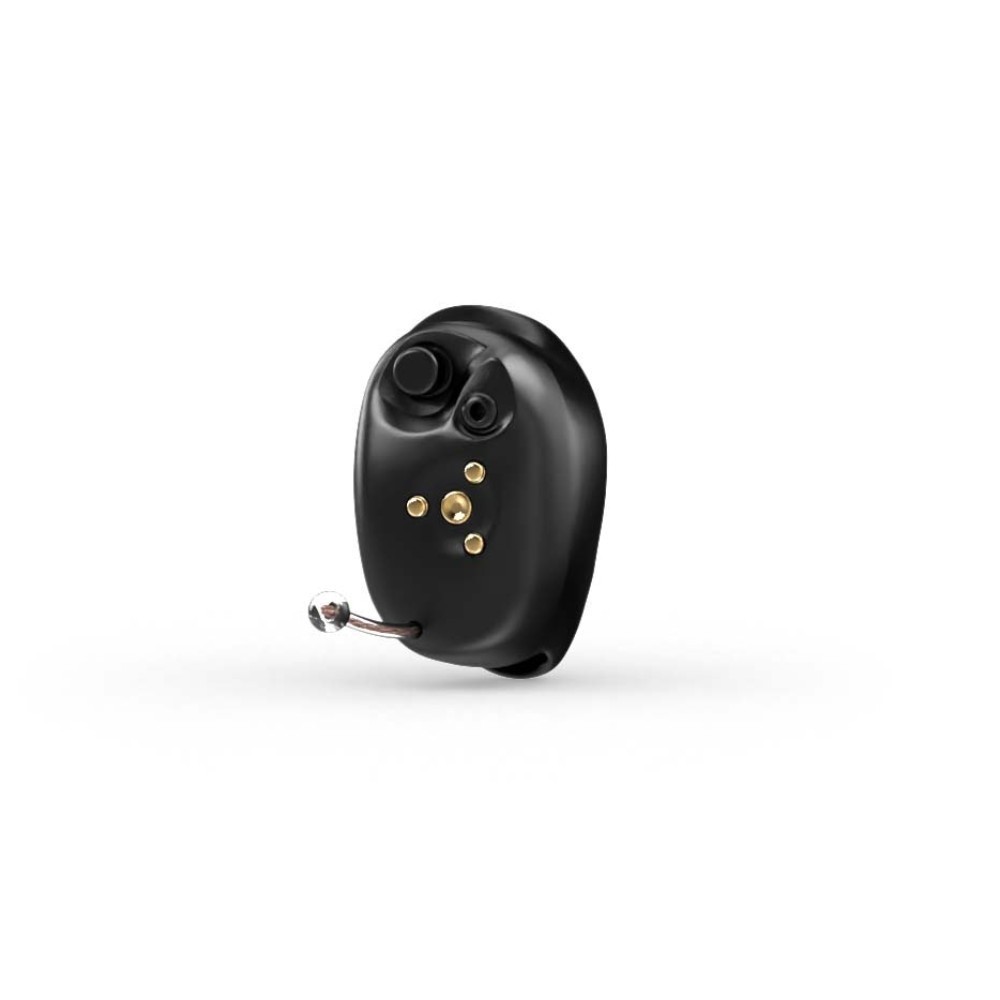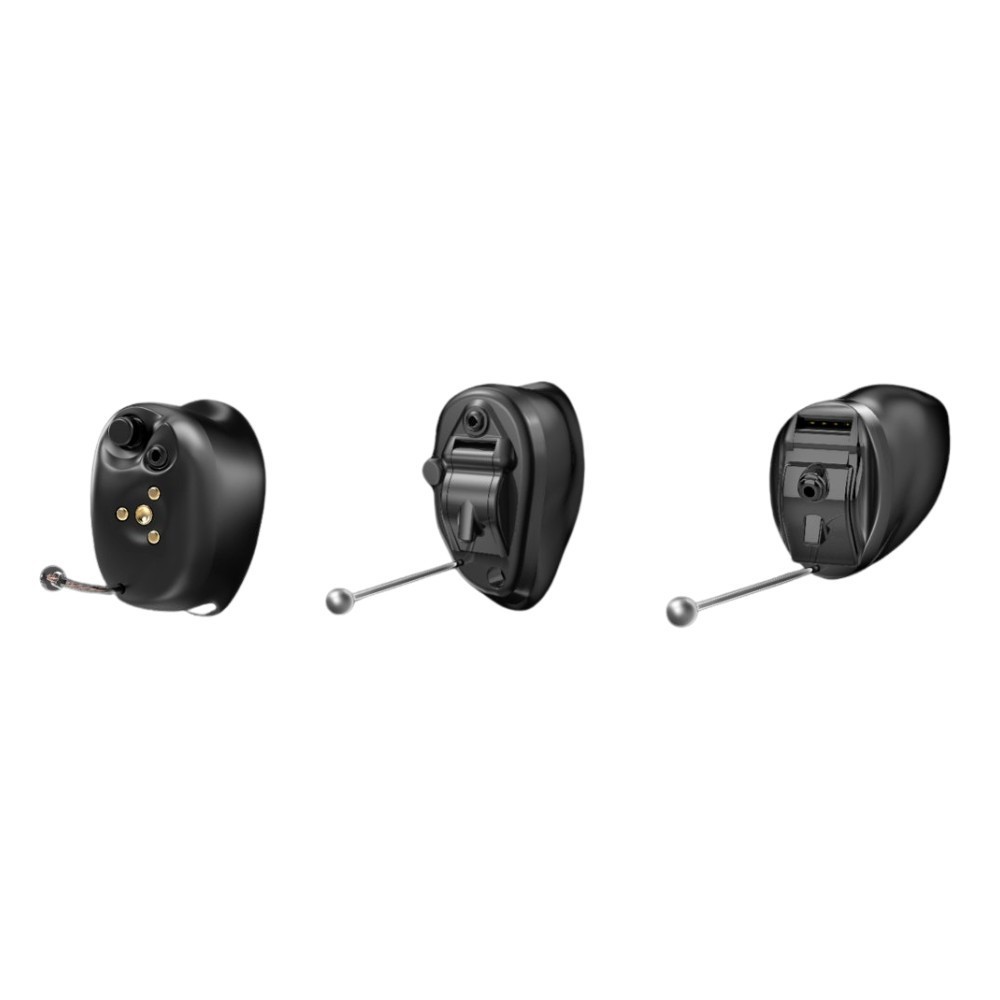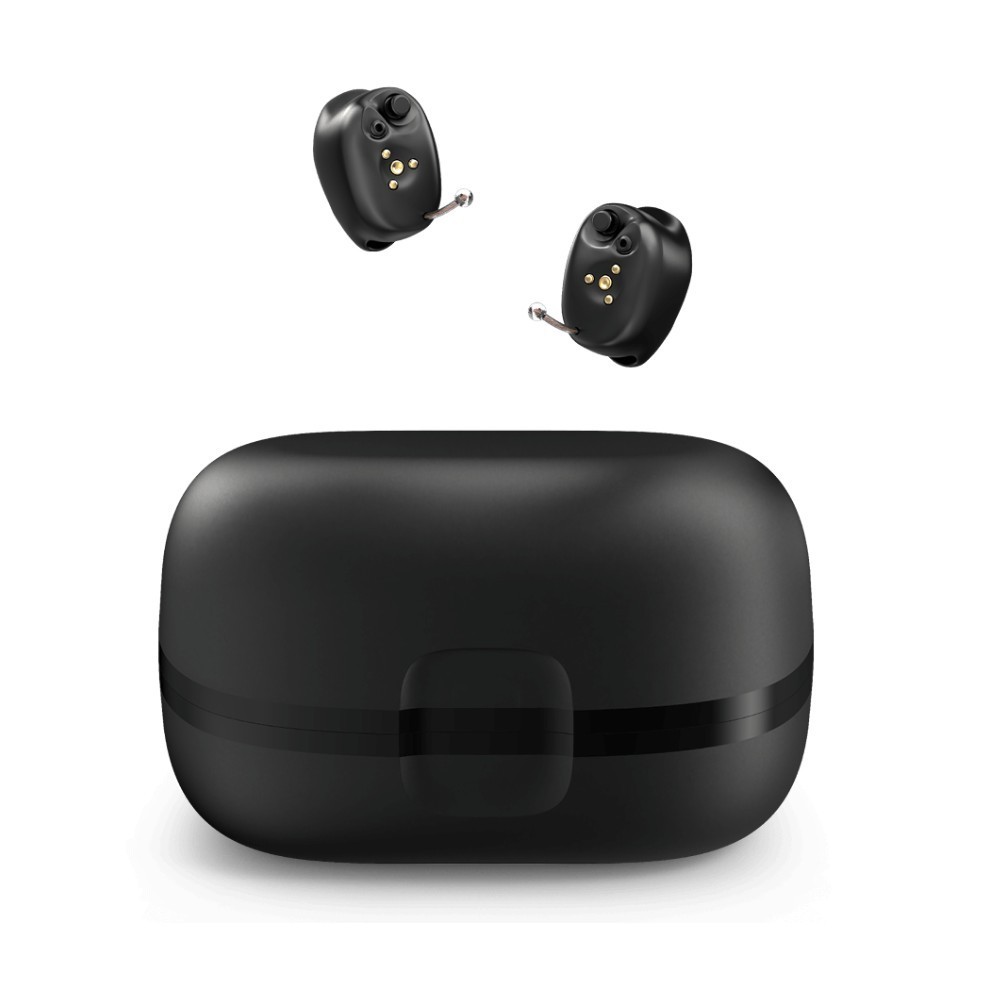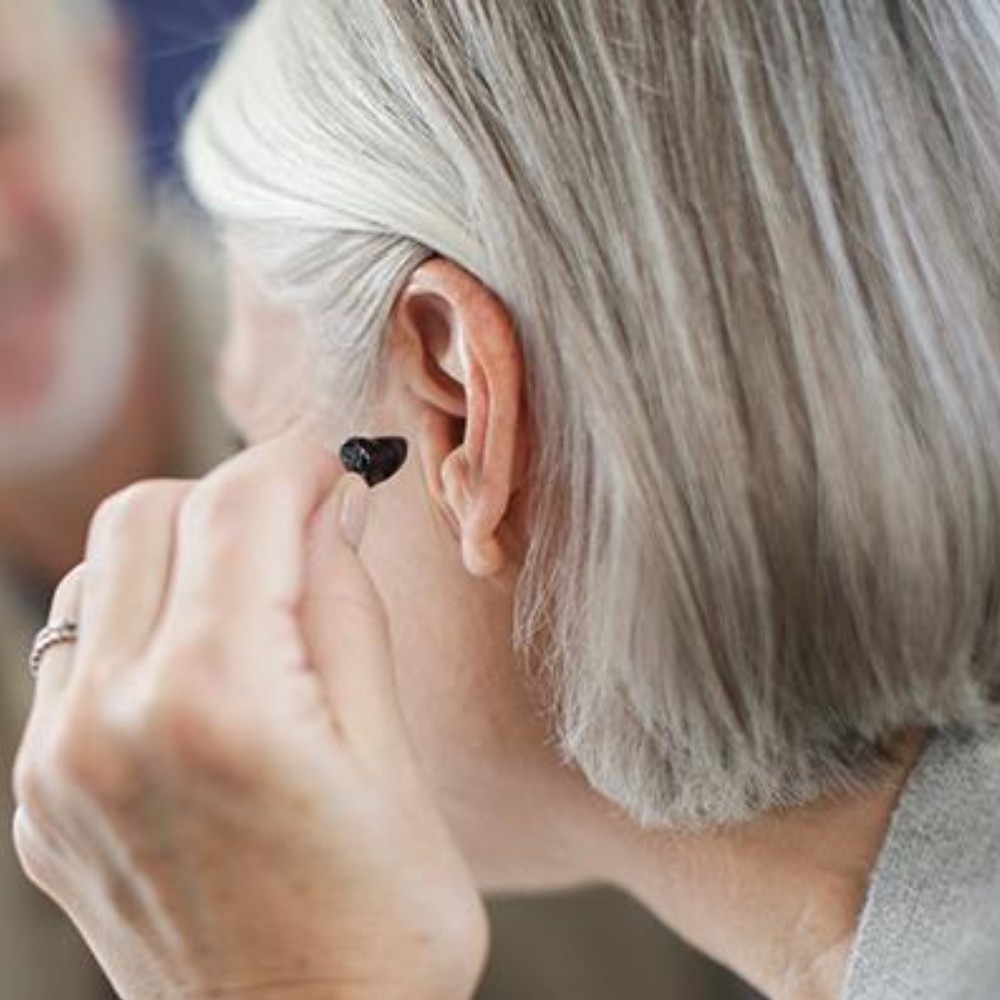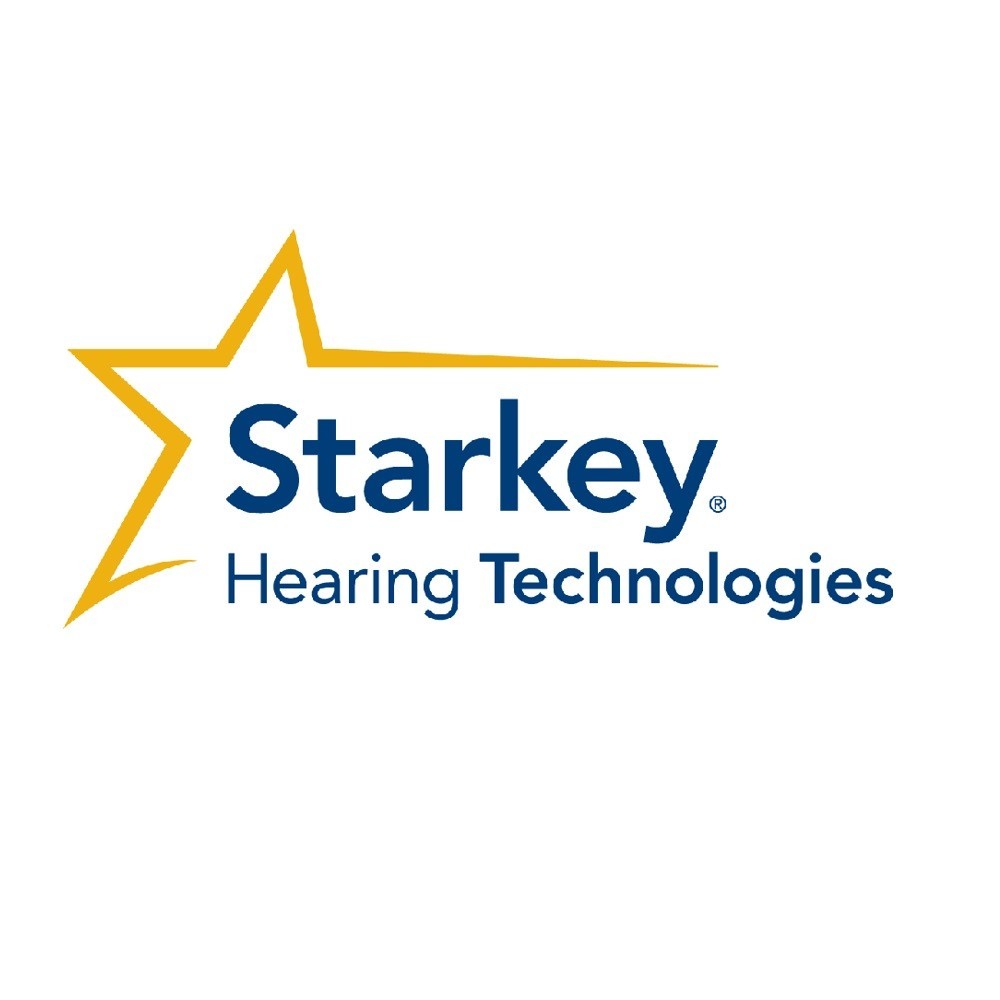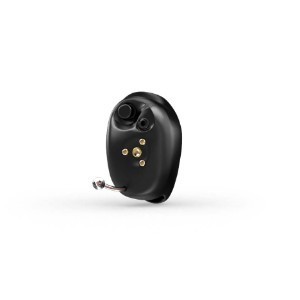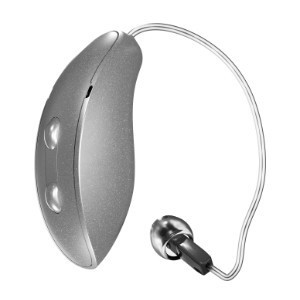Fitting Styles: CIC, IIC
Warranty: 5 years
Charger: Rechargeable CIC model is an additional £100 per aid

What's included in our hearing aid prices?
Details & Features
Starkey Signature Series 24 Hearing Aids Overview
The Starkey Signature Series 24 hearing aids, launched in April 2024, offer advanced, nearly invisible hearing solutions powered by the innovative Genesis AI platform. These aids provide a natural sound experience with Neuro Sound Technology, delivering lifelike sound while remaining discreetly hidden within the ear. Designed for those who value subtlety, the Signature Series 24 includes three custom-fit models tailored to unique ear shapes and hearing needs, available in both rechargeable and traditional battery options.
With features like motion-based optimisation, automated Edge Mode+, and IP68-rated protection against moisture and debris, these hearing aids are highly durable and adaptable. The Neuro Processor inside enables an impressive 80 million sound adjustments per hour and enhances listening comfort through automatic environmental awareness and feedback cancellation.
While they lack wireless connectivity, making them ideal for users seeking simplicity and discretion, the Signature Series 24 offers great comfort and sound quality for people who prioritise privacy over connectivity. Your audiologist can guide you in choosing the right model based on your lifestyle and preferences.
Powered by the Genesis AI platform
Launched in April 2024, the Starkey Signature Series 24 hearing aids offer crystal-clear, lifelike sound delivered by advanced technology discreetly concealed within your ear.
Everyone desires clear listening experiences with their loved ones and surroundings, yet not everyone feels comfortable acknowledging their hearing challenges openly. With the Starkey Signature Series 24 hearing aids, powered by the Genesis AI platform (and further enhancements), you can now have the best of both.
You can look forward to:
- Invisibility: These hearing aids are virtually undetectable, sitting snugly inside your ear without drawing attention.
- Natural sound: Neuro Sound Technology ensures that sound remains clear and true to its natural form, mirroring the brain's intentions.
- Custom-fit: Choose from three bespoke hearing aids tailored to fit your ear shape and address your specific hearing needs.
Hearing aid models and colours available
Starkey Signature Series 24 CIC R NW hearing aids: Starkey has said the Completely in the Canal (CIC) NW is the world's smallest custom rechargeable hearing aid, fulfilling a long-awaited need for both consumers and professionals seeking a discreet solution.
The new Completely-in-the-Canal (CIC) R NW offers up to 38 hours of operation before requiring a recharge and meets the waterproof standard (IP68 rating) observed in other Genesis AI rechargeable products. Available faceplate colours include black, dark brown, chestnut, medium brown, light brown, and pink. Shell colour options consist of clear, medium brown, light brown, blue/red, and black. Compatible chargers for the CIC R NW include the Starlink premium charger 2.0 and the Starlink charger 2.0.
Starkey Signature Series 24 CIC NW hearing aids: Created for those desiring a discreet design, this non-wireless Completely-in-Canal (CIC) choice operates on a size 10 battery. It provides an estimated lifespan of up to 6 days with 16 hours of daily wear, ensuring convenient usage without the need for frequent battery changes.
Available faceplate colours include black, dark brown, chestnut, medium brown, light brown, and pink. Shell colour options consist of clear, medium brown, light brown, blue/red, and black.
Starkey Signature Series 24 IIC NW hearing aids: This latest Signature Series Invisible in the Canal (IIC) NW surpasses all other small hearing aids in performance. Designed for those mindful of size and social perception, this groundbreaking IIC model operates on a size 10 disposable battery. It boasts an impressive lifespan of up to 7 days with 16 hours of daily wear before needing a replacement.
Available faceplate colours include black, dark brown, chestnut, medium brown, light brown, and pink. Shell colour options consist solely of black.
Main features and benefits
Genesis AI featured a complete redesign, inside and out, including all-new hardware and an innovative chip known as the Starkey Neuro Processor. This chip powers the Signature Series, too. Giving you 80 million adjustments per hour and a 20 dB improvement in dynamic range.
The inclusion of this chip marks Starkey's embrace of Deep Neural Network (DNN) technology, which offers advanced learning capabilities for enhanced sound processing built into the hearing aid.
The Neuro Processor is the industry’s most advanced processor with speeds four times faster than previous processors and features six times more transistors allowing it to adapt to more situations than ever before.
What's improved since Starkey Genesis AI?
What is the difference between Starkey Genesis and Signature series? There's better Edge Mode+ and optimisation. Once activated, using an optional push button, Edge Mode+ now operates automatically. It seamlessly transitions into a mode where it continuously scans, adapts, and optimises hearing based on changes in the surrounding listening environment.
Giving you clearer speech and improved listening comfort. However, please be aware that this feature is only available in the CIC models. The incorporation of sensor technology within Genesis AI's technology now guides the hearing aid's adaptive directionality. This functionality operates in two ways:
Environmental awareness: As you move, such as during walking or running, the Signatures Series 24 hearing aids utilise microphones initially introduced in Genesis AI. These microphones automatically switch to capture surrounding sounds, enhancing your awareness and overall listening experience.
Research conducted by Starkey revealed that this motion-based adjustment also effectively minimises wind noise during activity, thereby further enhancing the existing Genesis AI's wind noise reduction capabilities by up to 35 dB.
Reduced feedback: Feedback caused by the placement of the hearing aid and minor movements, like chewing or adjusting glasses or a hat, is less likely to result in whistling sounds. Starkey's feedback cancellation system becomes more proactive in response to these movements.
Other features include Transient Noise Reduction, Wind and Machine Adaptations, Music Enhancement, Auto Experience Manager, Feedback Cancellation, and Multiflex Tinnitus Pro.
Who would be the ideal candidates?
These custom hearing aids lack wireless capabilities, meaning they do not include Bluetooth. So you'll miss out on streaming, pairing with accessories, and utilising Starkey's apps, including health features like fall detection. If discretion is more important to you than connectivity and remote control of your hearing aids, then these are an excellent choice.
The rechargeable Completely-in-Canal (CIC) option will likely be popular due to its sheer convenience and portable charging, particularly appealing to those considering an upgrade or transitioning from NHS to private. Considering that not everyone feels comfortable openly acknowledging their hearing challenges, the discreet size of these aids is quite tempting.
However, wearers with active lifestyles who value health features and app functionality (initially introduced in the Livio) might prefer the Genesis AI range. However, if you're not seeking a hearing solution with extensive features or live a quieter lifestyle where you may not utilise all the bells and whistles, the Signature Series 24 hearing aids are worth considering.
Regardless of your choice, consult with an audiologist to assess which features align best with your lifestyle, hearing loss, and preferences. It's essential to invest in a device with features that you'll actually use.
Need more support with Starkey Signature Series 24?
Call us free on 0800 567 7621 to chat with an audiologist about these Starkey custom-fit hearing aids, what they can do for your hearing loss, and whether they are the right hearing solution for you.
We offer complimentary home visits, bringing our audiologists directly to you for convenient, personalised hearing care. Schedule an appointment with one of our trusted experts and enjoy the ease of professional support in the comfort of your own home.
Please note that there will be an additional surcharge of £125 if we are pairing a single hearing aid with an existing aid bought from another company, where we are taking over the aftercare responsibilities and looking after both hearing aids.
Starkey Signature Series 24 Hearing Aids Information
Click on the buttons below to discover moreWatch the Starkey Signature Series hearing aid video below
Have any questions?
Hearing aid technology advances constantly and it's important to know when it's time to replace the ones you already have.
For example, you might find that your current hearing aids aren't supporting your hearing like they used to.
Our audiologists can help you understand your new hearing loss needs and specifications and the hearing solutions that can get your hearing back on track.
Our specialist service includes:
Do not spend hundreds of pounds without getting a second opinion from us.
Please call us on 0800 567 7621
 Not only are the prices great, but the service is fantastic! Many thanks to your team.
Not only are the prices great, but the service is fantastic! Many thanks to your team.Other pages you might find useful
What's included in our hearing aid prices?
If you are looking at this page then it is likely that an audiologist has suggested that you purchase this particular hearing aid, so is this the best model for you?
In general, any audiologist will always recommend to you the model that best suits your needs. Here is a useful checklist to make sure that is the case.
- Audiologist level of knowledge: The audiologist you have seen will hopefully have a wide knowledge of all available hearing aids, however, some will only be familiar with a small number of brands and therefore may not really be in a position to know which model is the best for you. It is OK to challenge their recommendation and ask them to justify why this particular brand is the one for you.
- Do research: Read about the hearing aid that was recommended. Does it seem like it will suit your lifestyle? Does it have more or fewer features than you need?
- Be aware of sales targets: Many high street retailers have specific tie-ins to a particular manufacturer/brand. The hearing aid they have suggested may still be the correct one for you, but do your research so that you know why they might have recommended it.
If in doubt, feel free to give us a call. That's what we're here for. In the meantime, read all about our review of the best hearing aids for 2025 here
If you have significant hearing loss in both ears, you should be wearing two hearing aids. Here are the audiological reasons why:
Localisation: The brain decodes information from both ears and compares and contrasts them. By analysing the minuscule time delays as well as the difference in the loudness of each sound reaching the ears, the person is able to accurately locate a sound source. Simply put, if you have better hearing on one side than the other, you can't accurately tell what direction sounds are coming from.
Less amplification is required: A phenomenon known as “binaural summation” means that the hearing aids can be set at a lower and more natural volume setting than if you wore only one hearing aid.
Head shadow effect: High frequencies, the part of your hearing that gives clarity and meaning to speech sounds, cannot bend around your head. Only low frequencies can. Therefore if someone is talking on your unaided side you are likely to hear that they are speaking, but be unable to tell what they have said.
Noise reduction: The brain has its own built-in noise reduction which is only really effective when it is receiving information from both ears. If only one ear is aided, even with the best hearing aid in the world, it will be difficult for you to hear in background noise as your brain is trying to retain all of the sounds (including background noise) rather than filtering it out.
Sound quality: We are designed to hear in stereo. Only hearing from one side sounds a lot less natural to us.
Fancy some further reading on this topic? You can read about why two hearing aids are better than one in our article, hearing aids for both ears, here
For most people, the main benefit of a rechargeable hearing aid is simple convenience. We are used to plugging in our phones and other devices overnight for them to charge up. Here are some other pros and cons:
For anybody with poor dexterity or issues with their fingers, having a rechargeable aid makes a huge difference as normal hearing aid batteries are quite small and some people find them fiddly to change.
One downside is that if you forget to charge your hearing aid, then it is a problem that can't be instantly fixed. For most a 30-minute charge will get you at least two or three hours of hearing, but if you are the type of person who is likely to forget to plug them in regularly then you're probably better off with standard batteries.
Rechargeable aids are also a little bit bigger and are only available in Behind the Ear models.
Finally, just like with a mobile phone, the amount of charge you get on day one is not going to be the same as you get a few years down the line. Be sure to ask what the policy is with the manufacturer warranty when it comes to replacing the battery.
Looking for more information on rechargeable hearing aids? Read our dedicated page on the topic here
For most people, the answer is yes. But it's never that simple.
The majority of hearing problems affect the high frequencies a lot more than the low ones. Therefore open fitting hearing aids sound a lot more natural and ones that block your ears up can make your own voice sound like you are talking with your head in a bucket. Therefore in-ear aids tend to be less natural.
However the true answer is we can't tell until we have had a look in your ears to assess the size of your ear canal, and until we have tested your hearing to see which frequencies are being affected.
People with wider ear canals tend to have more flexibility, also there are open fitting modular CIC hearing aids now that do not block your ears.
There is also the age old rule to consider, that a hearing aid will not help you if it's sat in the drawer gathering dust. If the only hearing aid you would be happy wearing is one that people can't see, then that's what you should get.
Most people can adapt to any type of hearing aid, as long as they know what to expect. Have an honest conversation with your audiologist as to what your needs are.
Generally speaking, six or more. Unless it's none at all.
The number of channels a hearing aid has is often a simplistic way an audiologist will use to explain why one hearing aid is better than another, but channels are complex and it is really not that straightforward. Here are some reasons why:
Hearing aids amplify sounds of different frequencies by different amounts. Most people have lost more high frequencies than low and therefore need more amplification in the high frequencies. The range of sounds you hear are split into frequency bands or channels and the hearing aids are set to provide the right amount of hearing at each frequency level.
Less than six channels and this cannot be done with much accuracy, so six is the magic number. However, a six channel aid is typically very basic with few other features and is suitable only for hearing a single speaker in a quiet room. The number of channels is not what you should be looking at, it's more the rest of the technology that comes with them.
As a final note, different manufacturers have different approaches. One method is not necessarily better than any other. For example, some manufacturers have as many as 64 channels in their top aids. Most tend to have between 17 and 20. One manufacturer has no channels at all.
Hearing aids are easily lost, misplaced or damaged and typically are one of the most expensive personal possessions an individual can own. We offer hearing aid warranty coverage for £80 per year per aid. Find out more about this service we provide here
All our audiologists use the very latest technology and provide the full range of tests to accurately measure your hearing for free. Find out about what hearing healthcare services we offer all our customers here
Hearing Aid UK offers all their customers free home visiting services, even in a care home environment, for no extra cost. Including hearing tests, fittings, maintenance, check-ups and much more in the comfort of your own home and at your convenience. Find out more information about our home visits here
Here, at Hearing Aid UK, we are dedicated to offering low hearing aid prices. We achieve this by having no head office and low marketing costs. Our hearing aid prices are amongst the lowest you will find anywhere in the world. Explore our prices, brands, and models here
Other Models
Ask the Experts
6 Morton Lane
Walkwood
Redditch
Worcestershire
B97 5QA
Latest Launch
When we refer to a product as 'Latest Launch', we mean it is the latest to be released on the market.
New
When we refer to a product as 'New', we mean that the product is the newest hearing aid model on the market.
When we refer to a product as 'Superseded', we mean that there is a newer range available which replaces and improves on this product.
Older Model
When we refer to a product as an 'Older Model', we mean that it is has been superseded by at least two more recent hearing aid ranges.


